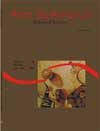Effect of cumulative chemical and mutagenic pollutants during ontogenic development of <em>Poecilia vivipara</em> (Cyprinodontiformes, Poeciliidae)
Abstract
Living in society is a feature of Homo sapiens and this fact gives him the advantage of occupying many biomes. Population increase and technological development brought a growth in the volume of dejects thrown into water sources. Knowledge of biological models that evaluates contamination levels of these sources is the aim of this research. Cells of the branchial epithelium of Poecilia vivipara, popularly known as guaru, modify their behavior in the presence of environmental variations and keep the homeostasis in adverse conditions. Our intention was to know the origin and the differentiation of cell types in the development of the gill and to detect variations of the branchial epithelium in embryos of pregnant females exposed to lead (a cumulative and mutagenic chemical pollutant). Two groups were formed, the control and the experimental group, which was exposed to a solution of 1 ppm lead acetate. Embryos in stages 24, 30 and 36 were observed (Vernier, 1969) and analyzed under light and electronic scanning microscopy. Embryos of the females were quantified and measured. The formation of the arcs, filaments, rays and lamellae gill were registered. In the epithelium, first the chlorine cells differentiated; in stage 36 mucous cells appear in the branchial ray. There were no morphological differences between the groups in the epithelial cells of the gill. Viviparity may be the explanatory factorDownloads
Download data is not yet available.
Published
2008-05-09
How to Cite
Araujo, E. J. de A., Morais, J. O. R. de, Souza, P. R. de, & Sabóia-Morais, S. M. T. de. (2008). Effect of cumulative chemical and mutagenic pollutants during ontogenic development of <em>Poecilia vivipara</em> (Cyprinodontiformes, Poeciliidae). Acta Scientiarum. Biological Sciences, 23, 391-399. https://doi.org/10.4025/actascibiolsci.v23i0.2694
Issue
Section
Biology Sciences
DECLARATION OF ORIGINALITY AND COPYRIGHTS
I Declare that current article is original and has not been submitted for publication, in part or in whole, to any other national or international journal.
The copyrights belong exclusively to the authors. Published content is licensed under Creative Commons Attribution 4.0 (CC BY 4.0) guidelines, which allows sharing (copy and distribution of the material in any medium or format) and adaptation (remix, transform, and build upon the material) for any purpose, even commercially, under the terms of attribution.
Read this link for further information on how to use CC BY 4.0 properly.
0.6
2019CiteScore
31st percentile
Powered by 

0.6
2019CiteScore
31st percentile
Powered by 











1.png)




3.png)













